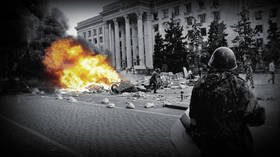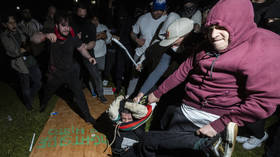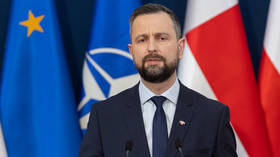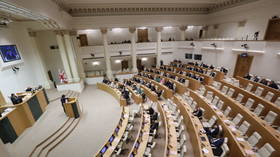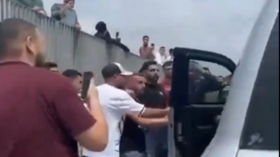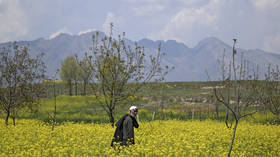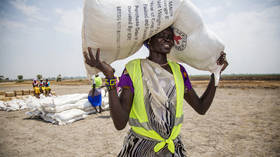Never say Neva – riverfront defense key to saving Leningrad
St. Petersburg, known at that time as Leningrad, is one of the Russian cities that suffered most during WWII.
RT highlights key points of the war and how the main geographical spots of decisive battles are preparing for the Victory celebration.
Leningrad played a pivotal role in the victory over the Nazi Germany. The city was under siege for almost 900 days by the German army. During that time, around 800,000 civilians perished.
The siege began in September 1941, just two-and-a-half months after the Germans invaded the Soviet Union. They got within touching distance of Leningrad. The main point of the siege was to starve the city, so the Nazis shut all of the transport links and cut off the city’s electricity, heating water and food. Food supplies were so low that in the winter of 1941, people were living with just 125 grams of bread per day. Leningrad residents were literally dropping dead on the streets, so they were forced to eat whatever they could get. They ate glue, boiled leather from shoes to eat and there were even reports of cannibalism.
The city survived through those two-and-a-half years by what is known as the Road of Life. It was a path over Lake Ladoga to the east of the city. Leningraders drove over in winter, sailed over in summer, evacuating women and children out of the city and getting what supplies they could into the city. It was just enough to keep the city breathing. And despite these inhumane conditions, the civilians did not buckle, they refused to surrender as did the soldiers of the Red Army defending the city.
St. Petersburg will be marking this on Sunday with big celebrations, a big parade by the armed forces and also veterans.
The story that really epitomizes the Leningrad fight for life is the story of a tiny patch of land called Nevsky Pyatachok, which saw some of the fiercest battles.
It is two-and-a-half kilometers long, 700 meters wide, and is sandwiched between the River Neva and what was the German frontline. It was here the Soviet army managed to puncture the Nazi blockade, but it came at the cost of 200,000 lives.
The Red Army attacked this spot because the German defenses around Leningrad were at their most shallow. Sometimes it was just 7km between the two Soviet fronts, and it was their best chance of relieving the Leningrad Blockade. The bridgehead saw non-stop fighting for almost two years.
Leonid Matorin was one of few survivors.
“The battles were intense here,” he recalls. “There was so much artillery, and the bombing was so intense the earth was black, and the snow was black too. So many explosions at a time! So many of our infantry troops died here.”
Trenches and craters still scar the land. Scattered bullets betray its morbid past. Three villages were wiped out on the bridgehead, and the bombing was so intense it even prevented future life from springing up too.
“The grass did not grow here for 10 years, and the ground was gleaming in the dark because of all the metal. 10 years after that, we started planting trees here, but they did not take root,” Matorin says.
The Soviets held one side of the river, and they would cross under heavy enemy bombing. Those that survived would climb up the river bank, only to be met by more German gunfire. Very few spent more than three days here, the ground was covered with corpses, but still the troops kept coming.
Zoya Vinogradova was in charge of the sanitation service for her battalion and had to rescue the wounded. She still bears the scars of her time on Nevsky Pyatachok, with four pieces of shrapnel lodged in her body.
“You could not see anybody beyond three meters in front, and the ground was trembling and groaning,” Vinogradova states. “There were so many wounded that I hardly managed to take them from the field.”
The Germans dropped around 50,000 shells on the bridgehead every day. The Soviet response was relentless – as one battalion was wiped out, another entered the fray.
Zoya herself became one of the wounded after just three days there.
“My chest and stomach were wounded, and my arm was injured too,” she remembers. “I was unconscious till the morning. The naval infantry came to replace our battalion. Somebody stepped on my hand by chance and I groaned. That’s how I was saved.”
Although the efforts at Nevsky Pyatachok never completely severed the Nazi defenses, the Soviets refused to buckle.
The crippling casualties were not in vain though.
“It was considered in this war of positions, the constant attack on Germans would wear them out and, more importantly, prevent them from carrying out their plans to attack the city of Leningrad,” says Natalya Koptelova, research associate from “Leningrad Blockade Breach” museum.
The two Soviet fronts did eventually meet in January 1944, and Nevsky Pyatachok was a vital foothold in releasing Leningrad from starvation.
The remains of those anonymous heroes are still being unearthed today by youth groups trying to put names to the fallen.
There are countless who will never be found, of course, but their bravery will not be forgotten.
For more on this read: "Those who dig out history".


